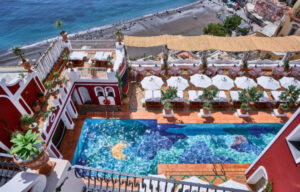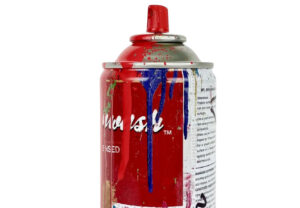In a desert filled with global headliners, multimillion-dollar LED rigs, and Instagrammable activations, there’s one place at Coachella that has always pulsed on its own frequency—hotter, louder, wilder. It’s not on the main stage, and it’s not backed by a corporate sponsor. It’s called Do LaB, and for 20 years, it has been the spiritual, sonic, and psychedelic soul of the festival.
Originally conceived as an art installation with sound, Do LaB has since evolved into a full-blown festival within a festival—a neon-drenched, mist-blasted enclave that champions electronic music, experimental design, and community-driven chaos. While the rest of Coachella is programmed and polished, Do LaB thrives on spontaneity, late-night energy, and the idea that music can still feel like discovery, not spectacle.
For its 20th anniversary, founders Dede, Josh, and Jesse Flemming—the three siblings behind the movement—are finally telling the story of how a DIY desert experiment became one of the most beloved and radical spaces in American festival culture.
The Roots – From Art Car to Amplified Vision
Before it became a stage, Do LaB was a vibe—an ethos rooted in participation over performance. In 2004, the Flemming brothers were fresh off building wild, immersive art environments for Burning Man. Their background wasn’t in music promotion—it was in sculpture, performance art, and temporary architecture. What they built was less a DJ booth and more a portal.
“When we first brought Do LaB to Coachella,” Josh remembers, “it wasn’t even a stage. It was an art piece with a small sound system, a water mister, and a lot of fabric. We just wanted to create a space where people felt in the music, not watching it.”
It was a rebellion against passivity. Inspired by collectives like The Do Lab’s early years at Lightning in a Bottle (their own festival), the brothers imagined a musical structure where the audience was the performer, the environment was the instrument, and the boundaries between roles dissolved.
The first Do LaB installation at Coachella resembled a sculptural chrysalis—a breathing structure of cloth and metal that shaded dancers by day and shimmered with LEDs by night. Within this structure, they placed DJs, sound, water, and—crucially—fans.
“We wanted a refuge,” says Dede. “Not from the music, but from the mechanics of the festival experience.”
Growth Without Compromise
In the years that followed, Do LaB didn’t just expand—it morphed. The Flemmings embraced architecture as performance, transforming their stages each year into temporary temples of kinetic sculpture. Whether resembling futuristic seed pods, hovering jellyfish, or angular fractals from another dimension, Do LaB’s structures became an essential visual landmark of the Coachella grounds.
But it wasn’t just the look that evolved—it was the lineups.
While major Coachella stages booked predictable EDM acts, Do LaB stayed lean, nimble, and committed to discovery. Early bookings included artists like Bassnectar, Glitch Mob, TOKiMONSTA, Flying Lotus, and ODESZA—long before any of them made it to Coachella’s main billing. Many of the artists who first broke through at Do LaB now headline global tours.
“We never chased hype,” says Jesse. “We booked people we believed in. We booked people who didn’t quite fit anywhere else—and that’s what made it work.”
Do LaB wasn’t just another festival stage. It was a career incubator, a sonic proving ground, and, perhaps most importantly, a place where risk was encouraged, not punished.
The Architecture of Ecstasy
Design has always been at the core of Do LaB’s success. For 20 years, the Flemming brothers have worked alongside a rotating cast of visual artists, structural engineers, light wizards, and fire safety experts to create installations that are as functional as they are fantastical.
Their builds are never off-the-shelf. They are modular, organic, and always responsive to climate, crowd flow, and energy. Do LaB’s infamous water cannons—which blast cooling mist across the dance floor—are as iconic as any light rig. Its floor plan is always optimized for 360-degree dancing, with minimal physical barriers and maximal sensory impact.
Each new structure tells a story. In 2013, it resembled a cocoon that glowed in sync with the beat. In 2018, it looked like a futuristic jungle gym with stacked towers and LED-tipped tentacles. In 2022, it featured fractal sails that shifted color with the sun. In 2025, it arrived like a meteor—a floating geometric monolith hovering above a nest of translucent wings.
“We want people to feel like they’re walking into a dream,” says Dede. “Something too beautiful to be corporate. Too strange to be branded. Something they’ll remember even if they don’t know the name of a single DJ that played.”
Surprise Guests and Secret Sets
While Do LaB’s lineup is always stacked with emerging talent, it has also become known for surprise sets that redefine the meaning of headliner culture. Some of the most iconic performances in Coachella history have happened at Do LaB with zero promotion—unannounced appearances from Skrillex, Diplo, RÜFÜS DU SOL, Bonobo, CloZee, and even Billie Eilish during a secret DJ set in 2023.
“People come to Do LaB to get surprised,” says Jesse. “And artists come here to play with no pressure. It’s like, the crowd is already winning—so you can do anything.”
Those “anything goes” sets often blend genre, break expectation, and become lore. Some last 45 minutes. Some go on for hours. And unlike the tightly scheduled, highly produced Coachella mainstage shows, Do LaB thrives on improvisation.
Community, Not Just Crowd
Perhaps what most sets Do LaB apart from every other activation, stage, or structure at Coachella is its community-first ethos. The Flemmings have always drawn from a crew of volunteers, friends, artists, dancers, and builders who understand that this isn’t just about sound—it’s about participation.
Do LaB stages have been co-constructed by collectives from around the world. Their lineups are curated with direct artist involvement. Their dance floors often feature spontaneous performances from aerialists, fire spinners, stilt walkers, and LED dancers who were never formally scheduled. And their backstage environment is radically inclusive—artists and staff mingle freely, exchanging stories and shots of coconut water.
“We still sleep in trailers,” laughs Josh. “We don’t have artist compounds or green rooms with sushi chefs. That’s not the point. The point is to create magic, and magic doesn’t happen when you build walls between people.”
20 Years of Going Bigger
In 2025, Do LaB celebrated its 20th anniversary at Coachella by going all in. Their structure was the most ambitious yet—engineered over six months, it was a suspended sculpture with programmable LED mesh that reacted to sound. The lineup featured genre-blurring acts from techno, glitch, house, and bass scenes—including a rare b2b set from Ivy Lab and Aluna, a sunrise set from Tycho, and surprise drops from Four Tet and James Blake.
But more than the lights, more than the music, it was the spirit that resonated. Twenty years later, Do LaB has not lost its edge. It has not been absorbed. It has not become safe.
“We just kept going bigger,” says Dede. “And somehow, the space kept holding it.”
Looking back through photos—dancers drenched in mist, strangers hugging under sculpted arches, DJs crowd-surfing, installations glowing like alien spacecraft—the evolution is clear. But so is the through-line: intention.
An Oasis That Refuses to Dry Up
Do LaB is more than an art installation. More than a stage. More than a launchpad. It is a reminder that even in the most commercial corners of music culture, authenticity can survive—if you build it right.
At a time when festivals often feel like theme parks or influencer lounges, Do LaB remains a place where sweat, sound, and surrender still matter. Where risk is rewarded. Where the moment counts more than the metric.
And for the Flemming brothers—who started with mist machines and scrap fabric—it’s still about the same thing.
“We never wanted to be the biggest,” says Jesse. “We just wanted to be the most alive.”
No comments yet.







